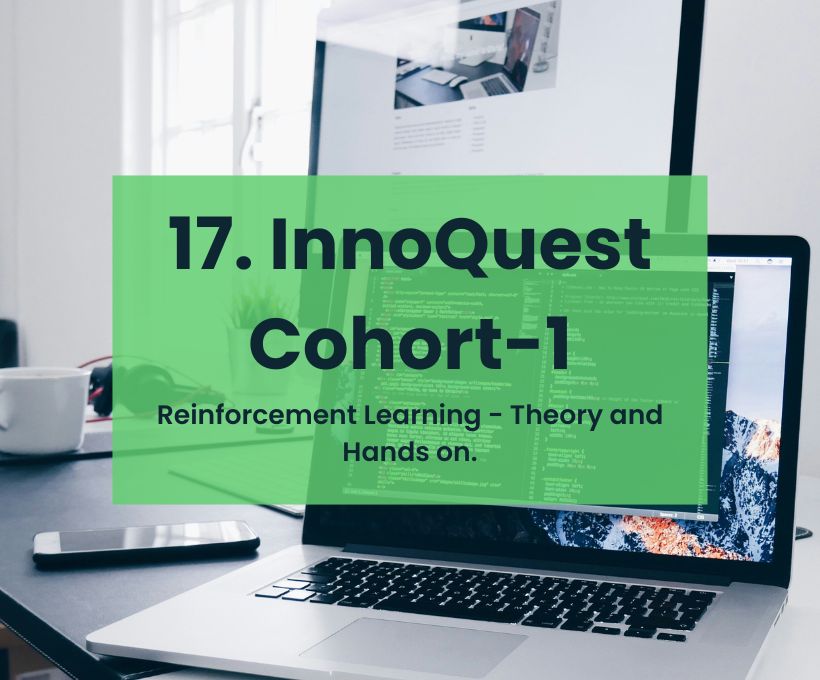Table of Contents
- Introduction
- Components of Reinforcement Learning
- How Reinforcement Learning Works
- Types of Reinforcement Learning
- Q-Learning: A Practical Approach
- Hands-On Examples
- Use Cases of Reinforcement Learning
- Conclusion
Introduction
In Lecture 17 of the Innoquest Cohort-1 professional AI/ML training by Innovista, we had an in-depth exploration of Reinforcement Learning (RL). This lecture not only covered theoretical aspects but also provided practical insights, making it a highly enriching experience for professionals and learners alike.
Components of Reinforcement Learning
We started with the fundamental components of RL:
- Agent: The learner or decision maker.
- Environment: Where the agent interacts.
- Episodes: Sequence of states, actions, and rewards.
- Reward: Feedback from the environment.
- State: Current situation of the agent.
- Action: Possible moves the agent can make.
How Reinforcement Learning Works
Understanding the dynamics of RL was crucial. We delved into how agents learn by interacting with the environment. Using the example of Amazon DeepRacer, we learned to train RL models. We also discussed types of rewards:
- Exploration: Focus on future rewards.
- Exploitation: Focus on immediate rewards.
Mathematical foundations were also covered, including the state value function and Q-learning formula.
Types of Reinforcement Learning
We explored different types of RL:
- Value-Based: Focuses on the value of actions.
- Policy-Based: Learns a policy directly.
- Model-Based: Uses a model of the environment.
- Model-Free: No model of the environment.
- Off-Policy: Focuses on updating the policy that differs from the one used to make the action.
- On-Policy: Focuses on updating the action policy.
Q-Learning: A Practical Approach
A significant portion of the lecture was dedicated to Q-Learning, a model-free, value-based, off-policy RL technique. We covered:
- Bellman’s Equation
- Q-Table Updates
- Main Steps in Implementation
Hands-On Examples
To solidify our understanding, we implemented Q-Learning on two examples:
- Frozen-Lake Example: Understanding the environment and implementing Q-Learning.
- Car-Parking Example: Practical application of learned concepts.
Use Cases of Reinforcement Learning
We concluded the lecture by discussing various use cases of RL in real-world applications, showcasing its versatility and potential.
Conclusion
Lecture 17 was a comprehensive dive into the world of Reinforcement Learning, blending theory with practical application. This session was particularly valuable for those looking to leverage RL in their professional projects or research.
If you are interested in collaborating or discussing these concepts further, Please feel free to reach out.
